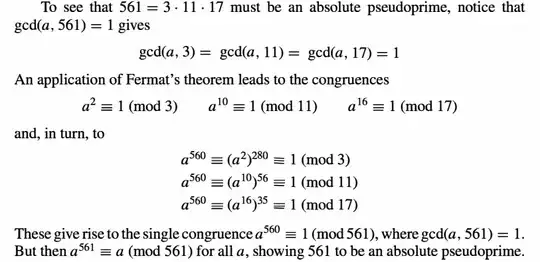The proof is given below:
But I do not understand the statement in the line before last which says "These give rise to the single congruence $a ^{560} \equiv 1 \pmod n$ where gcd(a, 561) = 1 ", I do not know why the previous mentioned system of linear congruences leads to this single congruence, what theorem is used to say this? is it the Chinese Remainder theorem ? if so how?
